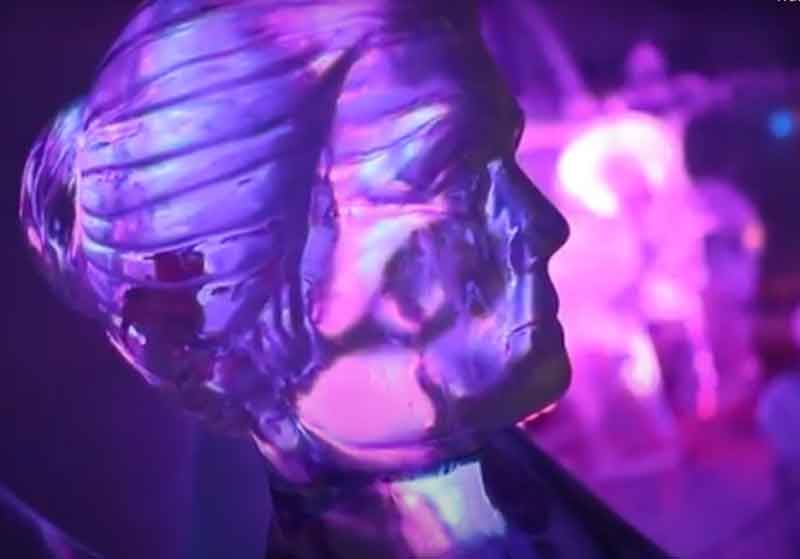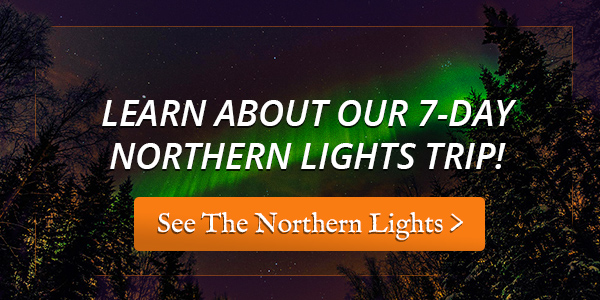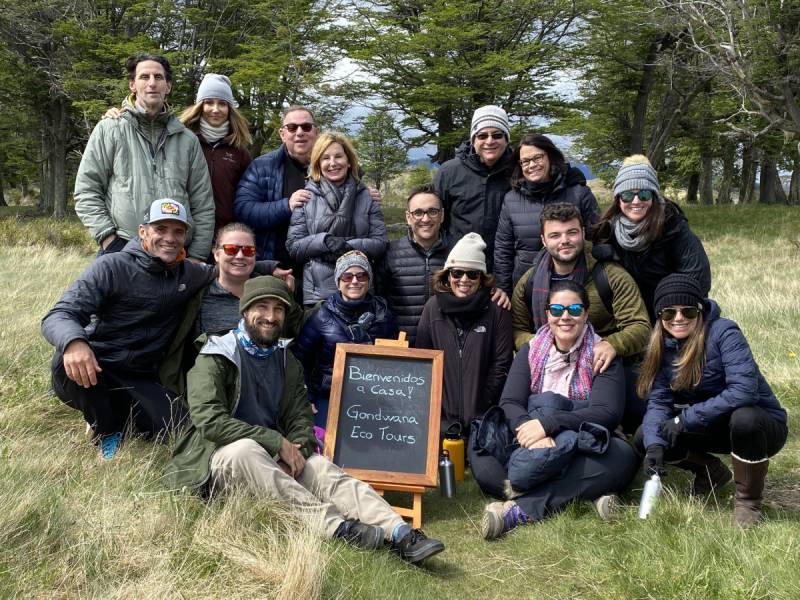If you’ve ever dreamed of seeing the Northern Lights in Alaska, I’ve been there—and it’s every bit as magical as you imagine. In this article, I’ll walk you through when and where you’re most likely to see them based on my own experience. You’ll learn the best months to go, the top spots like Fairbanks, what the seasons are really like, and what to expect if you visit in early autumn versus mid-winter.
Best Time To Catch the Northern Lights in Alaska?
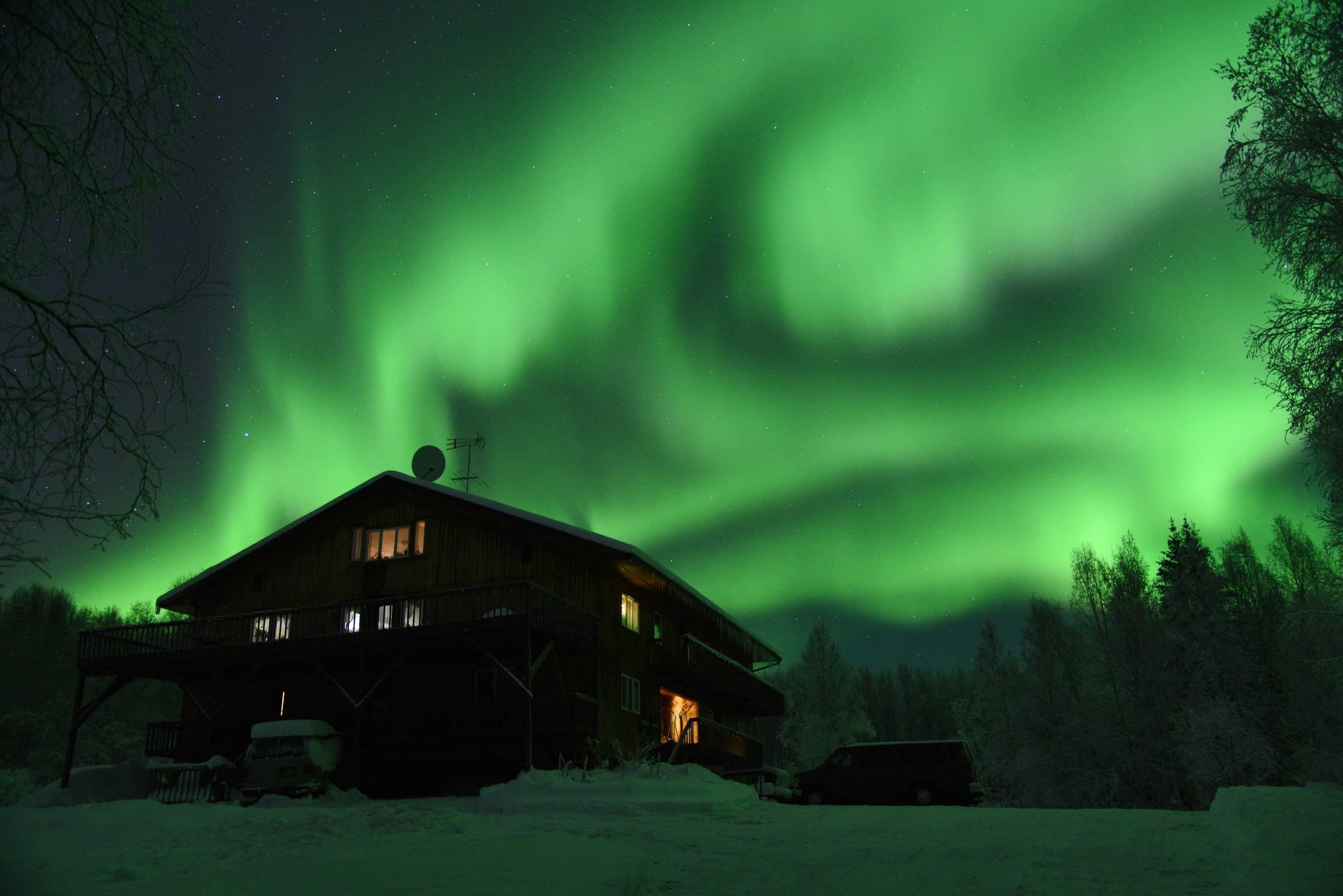
You may be asking yourself when you can see the Northern Lights in Alaska, and when the best time to visit Alaska is. Well, the best time to watch the Northern Lights in Alaska is between mid-September and early April. During that time, the nights are long and dark, which makes it easier to view the Northern Lights in Alaska. The Northern Lights occur in all four seasons of the year, although they are harder to see under the Midnight Sun. So, the best time to see the Northern Lights in Alaska is between mid-September and early April, when less daylight leads to darker night skies.
If you are wondering when you can view the Northern Lights in Alaska, you may think the best months are in September or October. In September and October, the weather is not cold yet, and while clear skies are not as reliable as in the Spring, the past few years have had incredibly colorful displays. So, is autumn the best time to visit Alaska? Autumn is very short in Alaska with the rapidly diminishing daylight hours, meaning temperatures soon begin to fall. Autumn begins in mid-September and is more or less over just a few weeks later. Much of the wildlife returns to hibernation, too. During this time of year bodies of water will not be frozen, so you may have the opportunity to see the aurora overhead and reflected on the surface, which makes for stunning views and incredible photographs! October often brings some snow, but it sometimes doesn’t come until November.
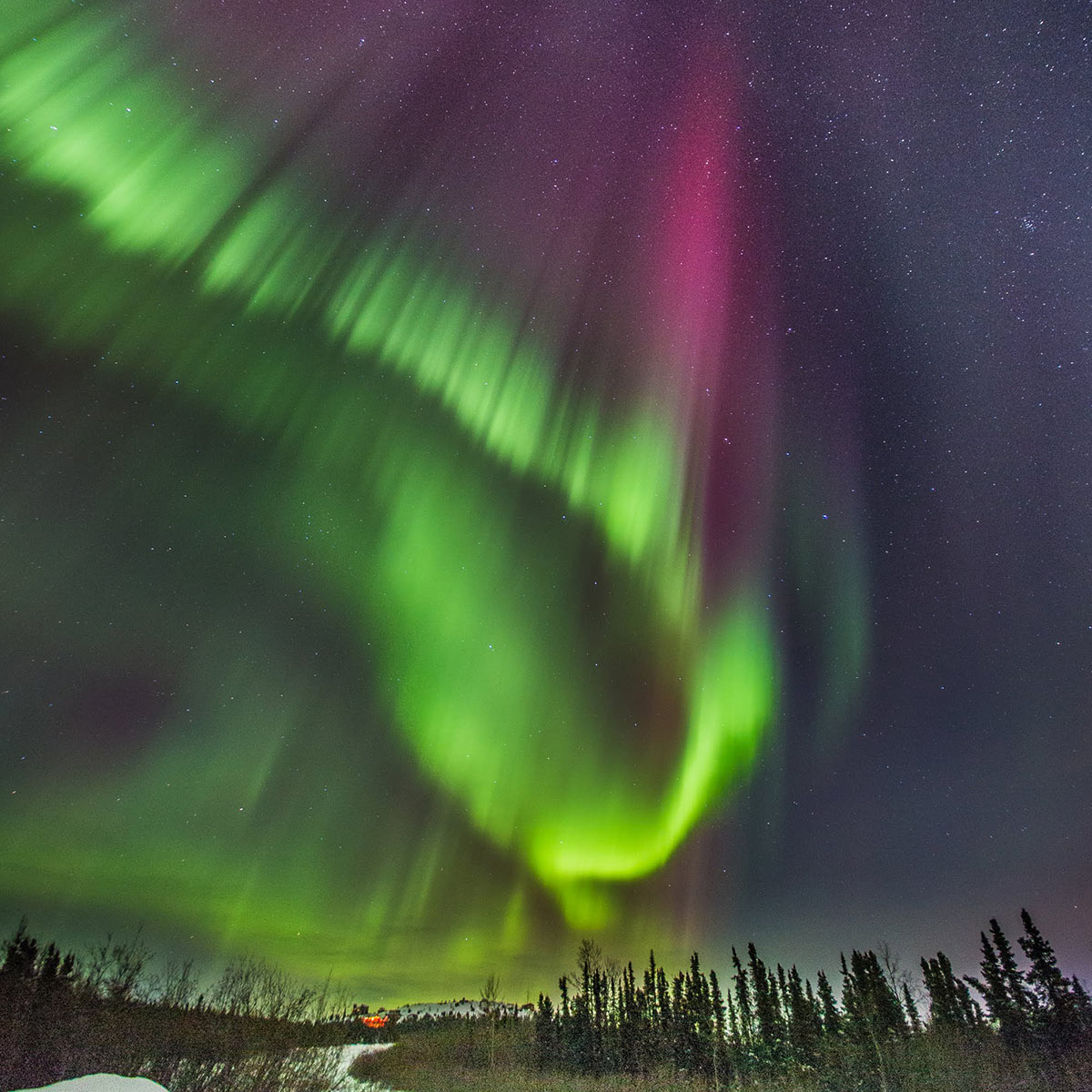
What Time of Night is Best to See the Northern Lights in Alaska?
The best hour of the night to see the Northern Lights in Alaska typically varies depending on several factors including solar activity, weather conditions, and geographical location within Alaska. However, there are some general guidelines to consider:
Midnight to 2 AM: During this time frame, geomagnetic activity tends to peak, which can result in more intense and visible auroras. This is often referred to as the “aurora window” or “prime time” for viewing the Northern Lights.
Late evening to early morning: While the aurora can be visible throughout the night, it’s often more active during the late evening hours into the early morning hours, particularly around local midnight. This is because the Earth’s magnetic field aligns with the solar wind during this time, making it more likely for auroras to occur.
Clear skies and darkness: Regardless of the time, the most important factor for seeing the Northern Lights is clear, dark skies. You’ll want to avoid light pollution from cities and towns, so heading to remote areas away from artificial light sources is ideal.
Winter months: In Alaska, the winter months typically offer longer periods of darkness, providing more opportunities for viewing the Northern Lights. The best time of year to see them is generally from September to April when nights are longest and skies are darkest.
Monitor aurora forecasts: There are several websites and apps available that provide aurora forecasts and real-time aurora activity updates. These can help you determine the best times and locations for viewing the Northern Lights in Alaska.
Keep in mind that while these are general guidelines, seeing the Northern Lights is always subject to natural variability, so it’s not guaranteed even during peak viewing hours. Patience and flexibility are key when trying to catch this breathtaking natural phenomenon.
Your best chances of seeing the Northern Lights in Alaska is always between 10 pm and 2 am. That is the best time to see the Northern Lights in Alaska, but you may not want to wait up for the entire night to spot the northern lights. Fortunately on our Northern Lights Ecotour, our night-time Aurora guide stays up watching the skies so you don’t have to. We track the solar activity forecasts, scan the skies and provide wake-up calls whenever the Aurora Borealis appears.
Best Month/Season To Watch The Northern Lights In Alaska
Auroras can be seen in Alaska from September through April when the night skies are dark enough, but what I have found is that the best months to catch the Northern Lights are those closest to the winter solstice, thanks to the shortest daylight hours. March, which includes the spring equinox, often stands out as the prime time for Northern Lights viewing. During this time, cold temperatures and the northern exposure near the magnetic poles combine to create ideal conditions for vibrant auroral displays. As winter begins to fade, March provides plenty of darkness and usually clearer skies, making it one of the best months to witness the mesmerizing dance of the Northern Lights. From my experience, many travelers choose March to visit Alaska, eager to see the spectacular aurora lighting up the night sky under these perfect conditions.
| Months | Will You See The Northern Lights? | Average Hours of Night/Darkness | Aurora Activity | Weather | Weather |
|---|---|---|---|---|---|
| January | Will there be Northern Lights? Great Chances to see the Northern Lights in Alaska, but there are high chances of storms that may cause skies to be overcast. |
Average Hours: 17.5hrs |
Activity: Medium Activity |
Weather: Chance of Cloud Cover |
See The Northern Lights |
| February | Will there be Northern Lights? One of the BEST times to see the Northern Lights in Alaska |
Average Hours: 14.9hrs |
Activity: Highest Activity |
Weather: Clear Skies |
See The Northern Lights |
| March | Will there be Northern Lights? One of the BEST times to see the Northern Lights in Alaska |
Average Hours: 12.1hrs |
Activity: Highest Activity |
Weather: Clear Skies |
See The Northern Lights |
| April | Will there be Northern Light? Good Chances Your Will See The Northern Lights, but the nights are much shorter than during the winter months. |
Average Hours: 9.2hrs |
Activity: High Activity |
Weather: Clear Skies |
See The Northern Lights |
| May | Will there be Northern Lights? Unlikely That You Will See The Northern Lights In Alaska |
Average Hours: 6.5hrs |
Activity: Medium Activity |
Weather: Clear Skies |
See The Northern Lights |
| June | Will there be Northern Lights? Unlikely That You Will See The Northern Lights In Alaska |
Average Hours: 4.8hrs |
Activity: Low Activity |
Weather: Clear Skies |
See The Northern Lights |
| July | Will there be Northern Lights? Unlikely That You Will See The Northern Lights In Alaska |
Average Hours: 5.7hrs |
Activity: Low Activity |
Weather: Clear Skies |
See The Northern Lights |
| August | Will there be Northern Lights? Unlikely That You Will See The Northern Lights In Alaska |
Average Hours: 8.3hrs |
Activity: Low Activity |
Weather: Clear Skies |
See The Northern Lights |
| September | Will there be Northern Lights? One of the BEST times to see the Northern Lights in Alaska |
Average Hours: 11.2hrs |
Activity: Highest Activity |
Weather: Clear Skies |
See The Northern Lights |
| October | Will there be Northern Lights? One of the BEST times to see the Northern Lights in Alaska |
Average Hours: 14hrs |
Activity: High Activity |
Weather: Clear Skies |
See The Northern Lights |
| November | Will there be Northern Lights? Great Chances You Will See The Northern Lights |
Average Hours: 16.8hrs |
Activity: Medium Activity |
Weather: Clear Skies |
See The Northern Lights |
| December | Will there be Northern Lights? Fair Chances to see the Northern Lights in Alaska, but there are high chances of storms that may cause skies to be overcast. |
Average Hours: 18.4hrs |
Activity: Low Activity |
Weather: Chance of Cloud Cover |
See The Northern Lights |
Best Hours of the Night To See The Northern Lights In Alaska
For an unforgettable encounter with the Northern Lights in Fairbanks, time your venture between the enchanting hours of 10 pm and 3 am, when the celestial spectacle reaches its peak brilliance. While fleeting glimpses may appear during the soft hues of dusk or the hushed predawn moments, committing to an all-night vigil maximizes your chances of witnessing nature’s grandeur in its full splendor. Each shimmering wave and cascading arc of light holds an indescribable allure, captivating the soul with its ethereal beauty.
Photographers, seeking to capture the ephemeral magic of the aurora borealis, should consider using a specific ISO setting to optimize their shots. Utilizing a higher ISO, such as 800 or above, enhances the camera’s sensitivity to light, enabling clearer and more vibrant images of the dancing lights against the night sky. This adjustment ensures that even the subtlest nuances of color and movement are faithfully rendered, immortalizing the breathtaking spectacle for all to admire.
When Are The Worst Times To See The Northern Lights In Alaska?
The worst time to see the Northern Lights in Alaska is during the summer months when the midnight sun dominates the sky, obscuring the aurora’s visibility. Additionally, increased daylight hours and atmospheric conditions reduce the chances of witnessing this celestial phenomenon.
During the summer months, Alaskans and visitors alike often shift their focus from the elusive Northern Lights to the abundance of outdoor activities available under the continuous daylight. Hiking, fishing, and wildlife spotting (like seeing grizzly bears) become popular pastimes, allowing people to immerse themselves in the stunning natural beauty of the Alaskan landscape. While the aurora may take a backseat during this time, the vivid greens of the boreal forest and the snow-capped peaks of the mountains offer a different kind of mesmerizing spectacle for those exploring the Last Frontier.
More About The Best Times To See The Northern Lights In Alaska
In the months of November and December, the cold starts creeping in and the snow starts falling. Alaska in November transforms into a winter wonderland, with snow-capped landscapes and a serene atmosphere. This month offers a unique opportunity to witness the state’s natural beauty adorned in a blanket of snow, creating a magical and tranquil experience for visitors. You’ll be able to enjoy classic winter activities like dog sledding and snowshoeing during one of the best times to see the Northern Lights. A higher chance of snow equates to more potential cloud cover, but as the nights get longer you also have more hours for potential sightings. Explore the enchanting beauty of Alaska in November, December, and January where the snowy landscapes provide a serene backdrop for unforgettable winter adventures and a chance to witness the state’s wildlife against the stunning, snow-covered scenery. This makes the winter months one of the best times to see the Northern Lights in Alaska, as well as one of the best times to visit Alaska.
January through March Prime Time!
Many people say the months of January through March are the best time to visit Alaska! But are they the best months to see the Northern Lights in Alaska? Yes! These two months are one of the best times to see the Northern Lights in Alaska, although temperatures through February are quite cold, often as low as -20 Fahrenheit, so make sure to wear insulated clothing from top to bottom. If you don’t own everything you need to stay warm in the Arctic (most people don’t!), we offer affordable gear rentals for our tours, which include suitable mittens, a winter hat, snow boots, and insulated pants, and a warm coat.
Just remember if you are visiting Alaska in the winter – January starts out pretty dark, but the days grow longer with 8 hours of light in early January to more than 12 hours by the end of February. It’s one of the best times to visit Alaska and see the Northern Lights in Alaska because many towns have fun winter “cabin fever reliever” festivals. There’s great snow for winter sports, and enough darkness for visitors to see Northern Lights in Alaska.
As March begins, temperatures start rising and since the majority of the snow has already fallen for the season, we often have many clear nights. This may be a great opportunity to see the Northern Lights, but may not be the best time to see the Northern Lights in Alaska. However, during the month of March the days are longer (12 – 15 hrs), it warms up (20’s and 30’s), and there’s great snow. The Iditarod sled dog race starts on the first Saturday in March. All of these things make some people think March is the best time to visit Alaska and the best time to see the Northern Lights in Alaska!
Here’s Why March Is Good, But Not The Best Time To See The Northern Lights In Alaska
The downside to looking for the Alaskan Northern Lights in March is that with more daylight, you will have to stay up later to watch for the lights. The good news is that if you travel to see the Northern Lights with us, then you will get a wake-up call when a viewing opportunity occurs! So, if you are a night owl or don’t mind being pulled out of a cozy bed, March might be the best time for you to see the Northern Lights in Alaska!
Is October in Alaska A Good Time To See The Northern Lights?
Alaska in October is an in-between time of year for vacations and traveling. Summer adventures have ended, and winter fun has not yet begun. Days grow shorter, and the weather can be cold and rainy – or even snowy! Bears are preparing for hibernation after a summer of salmon runs. You can experience dazzling fall color, but only until mid-month, because the leaves fall fast!
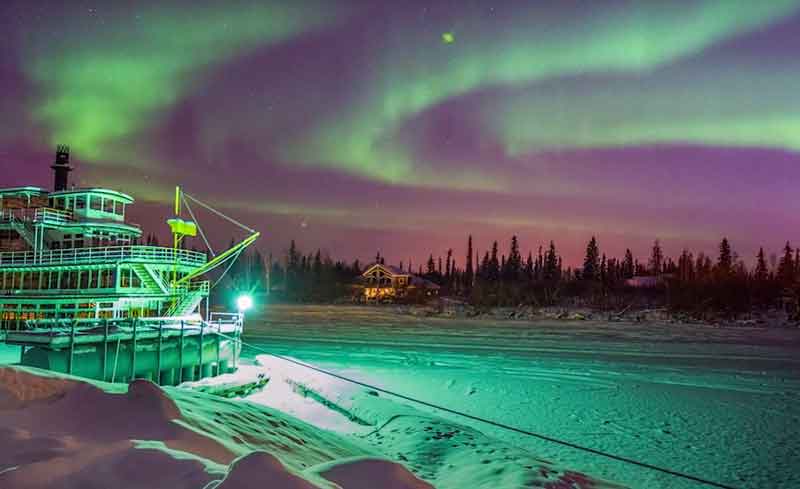
Skies Are Often Clearer In Colder Months; When The Northern Lights Are Most Visible
While October isn’t the best time to visit Alaska, there are some bright lights to the month:
- Summer crowds are gone from Alaska in October, so you’ll have the wilderness to yourself. The hiking is great this time of year, as long as the trails stay clear of snow.
- Alaska in October is a great time to see the Northern Lights before it gets too cold!
- You can still visit Exit Glacier in Kenai Fjords National Park or travel to Mile 30 inside Denali National Park.
- If the temperatures are too cold, you can visit Alaska’s amazing museums.
- The fishing for trout and steelhead is fantastic this time of year!
What Causes The Northern Lights?
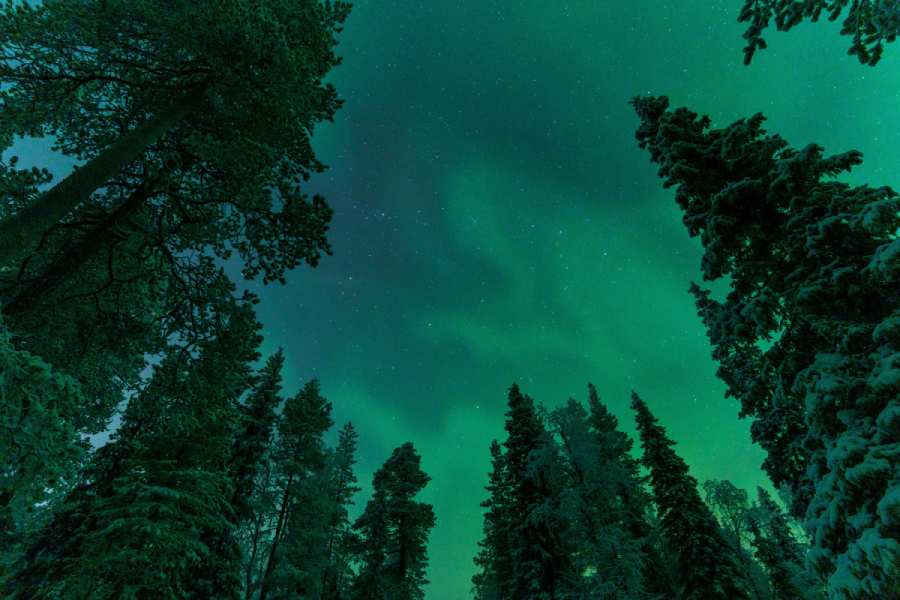 The ideal time of year to experience the stunning northern lights in Alaska is between late September and early April, when the nights are longest and the skies are at their darkest.
The ideal time of year to experience the stunning northern lights in Alaska is between late September and early April, when the nights are longest and the skies are at their darkest.Even though the Northern Lights are only visible when the sky is completely dark, the auroras are actually caused by the sun. During active phases of solar activity, the sun sends energy and particles toward earth, where they interact with gases in our atmosphere, resulting in the beautiful displays of light we see in the sky. Every 10 – 12 years, the sun’s solar cycle increases, and the number of sunspots on the sun’s surface becomes more numerous. The more sunspots on the sun’s surface, the more solar flares – and the more energy is released into space, causing more aurora activity for our viewing pleasure.
If you want to know when the best time to see the Northern Lights in Alaska is, or when the best time to visit Alaska is, you need to pay attention to the Sun’s solar activity cycle. Every 11 years, the sun passes through a Solar Maximum (a time of increased solar flare activity, fueling the aurora) that is followed by a Solar Minimum (a time of lowest solar activity). The best time to see the Northern Lights is during the Solar Maximum. In general, the Northern Lights will remain active for two to three years before and after a Solar Maximum, increasing the frequency and intensity of aurora sightings and making this the best time to visit Alaska to view the Northern Lights.
What Are The Best Conditions For Northern Light Viewing?
Finally, the Northern Lights are easiest to see when the sky is clear and free of clouds. Yes, sometimes you can see the Northern Lights if the cloud cover is thin and the aurora is strong, but the best time to see the Northern Lights in Alaska is when the skies are dark, clear of clouds, and the solar activity is strong!
So, when are the Northern Lights in Alaska? When can you see the Northern Lights in Alaska? Read on to learn more about the best months to see the Northern Lights in Alaska, and when you can see the Northern Lights in Alaska.
Where is the Best Place in Alaska to See the Northern Lights?
Can you see the Northern Lights in Fairbanks, Alaska? Absolutely. Fairbanks is widely considered the best place in Alaska to see the aurora borealis. Thanks to its location directly under the auroral oval and its reliable access to dark, clear skies, Fairbanks offers some of the most consistent aurora activity in the state. Add in the city’s strong infrastructure—airport access, hotels, restaurants, and tour options—and it’s no surprise this is where many travelers begin their aurora hunting adventures.
Aurora Viewing Near Fairbanks
While the lights are often visible right from town, many tour operators take guests just outside city limits to escape light pollution. For our trip, we stayed at a pair of lodges about ten miles outside of Fairbanks. The setting was quiet, dark, and perfect for aurora viewing—no need to drive out in the middle of the night. On clear nights, the aurora displays were vivid across the northern horizon, sometimes stretching across the entire sky. Best of all, an on-site guide would wake us up when the lights appeared, so we never missed a moment. It was as easy as bundling up and stepping out the front door.
Other Great Spots Near Fairbanks
Fairbanks also offers easy access to some well-known aurora-viewing locations. Chena Hot Springs is a popular choice for those looking to combine relaxing in natural hot water with a chance to watch the Northern Lights overhead. The Aurora Ice Museum at Chena is another unique experience—an artistic, frozen wonderland open year-round. For those up for an adventure, Murphy Dome offers panoramic views and minimal light pollution, making it one of the highest and darkest spots in the region.
Looking North Toward the Brooks Range
Some visitors even make the trek farther north toward the Brooks Mountain Range, where the isolation and extreme latitude create ideal aurora conditions. While more remote, the northern skies here often erupt with dramatic displays, making it a favorite destination for serious aurora hunters and photographers.
Will I see the Northern Lights on my Tour?
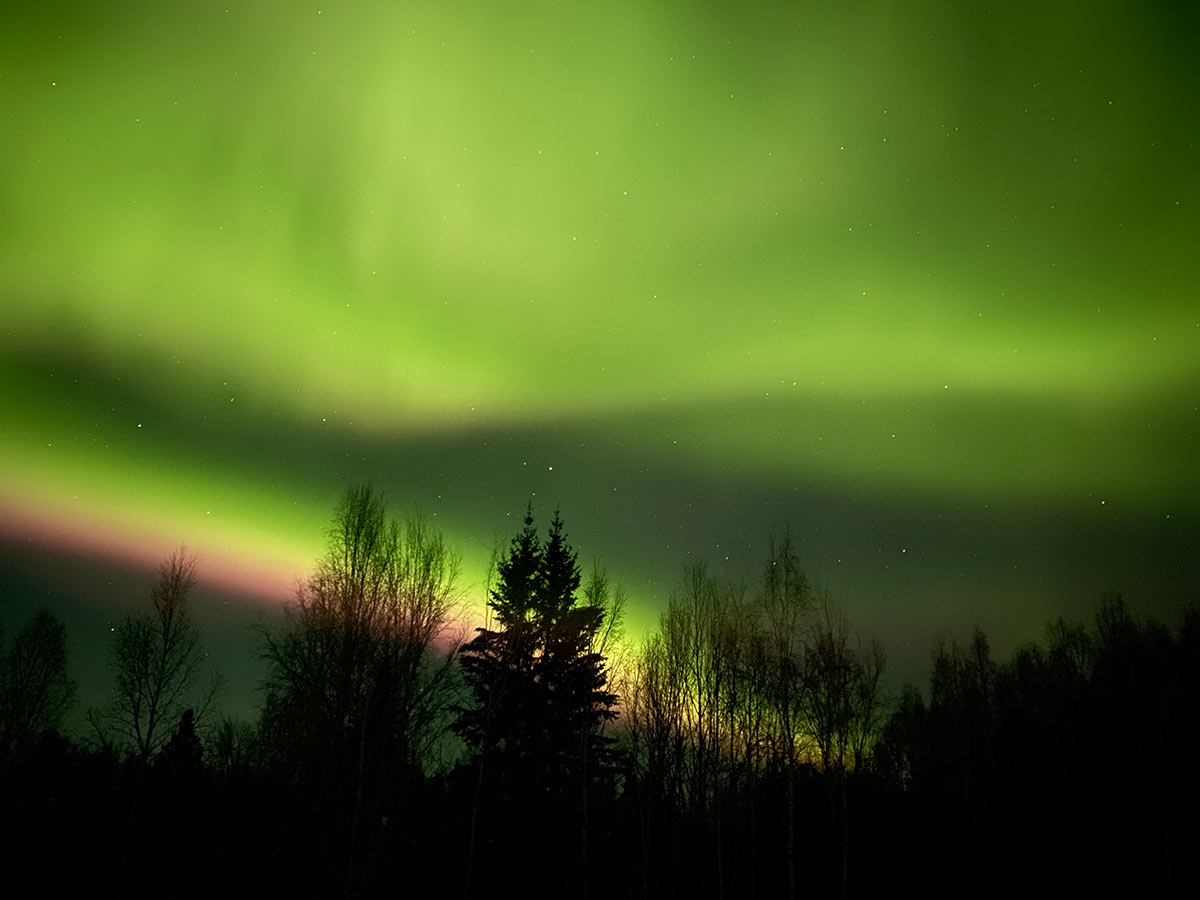
One of the most common questions we get is: When can I see the Northern Lights in Alaska? While no one can guarantee a sighting—since the aurora is a natural phenomenon—we plan our Northern Lights Adventure during peak aurora season to give you the best possible chance.
Our tours are timed for periods of long, dark nights and heightened auroral activity. We avoid heavy city lights and stay at lodges with minimal ambient light, just outside downtown Fairbanks, where the skies are darker and the aurora displays are clearer. In fact, all of our guests from the past three seasons (2018–19, 2019–20, 2020–21) saw the Northern Lights at least once during their trip.
We also monitor real-time data using an aurora tracker, which helps us respond to changes in weather and geomagnetic storms—both of which can influence visibility. Unlike standard northern lights tours that may only offer a few hours of viewing, our trips are built around flexibility and multiple nights of aurora watching, giving you more opportunities to experience the magic.
When can you see the Northern Lights in Alaska?
The Northern Lights occur because of solar events that spark geomagnetic storms and aurora activity, and because the sun is presently near what is called solar minimum, there is a smaller chance now of experiencing a full-on auroral storm than during solar maximum. However, there will be nightly displays of Northern Lights right through the moment of solar maximum returns in 2024. The real trick is finding clear skies, and knowing that the clear skies mean the best time to see the Northern Lights in Alaska.
So, when can you see the Northern Lights in Alaska? When is the best time to visit Alaska to see the Northern Lights? Displays of the Northern Lights tend to intensify around the equinox months of September and March because Earth’s tilt in relation to the sun means that the magnetic field of Earth and the solar wind are in sync. Combine that with a higher chance of clear skies in Alaska during the spring months, and March at an inland location will likely be the best time to see the Northern Lights in Alaska. If you are searching for an intense viewing experience, September and March may be the best time to visit Alaska.
What Are My Chances Of Seeing The Northern Lights In Alaska In September?
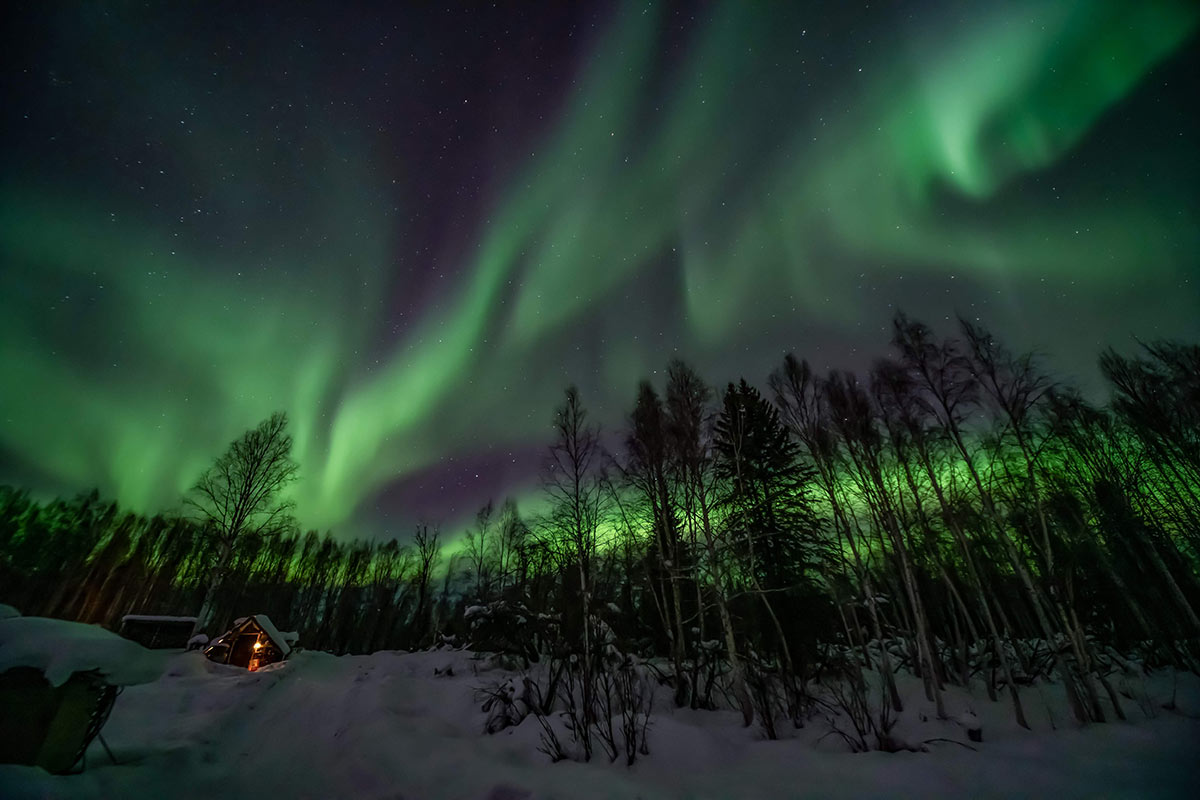
We run the tours from September through the end of March/early April. So why are the odds so great? It’s a combination of several factors:
- Location: the area around Fairbanks is situated near the Arctic Circle and is well known for frequent northern light sightings. The skies are dark outside of the city, which makes them easier to spot.
- Duration: Our Northern Lights tours offer six nights of potential viewings. The more time you spend around Fairbanks in the winter, the greater the chance of seeing the aurora. In fact, the Northern Lights are visible four out of five nights during the season up here—as long as the skies are clear.
- Night watch: In addition to our daytime guides, we have a nighttime guide on staff to watch for the lights. Whenever they appear in the skies, he or she will wake you up with a text message, phone call, or knock on your door so you won’t miss them.
If you’re interested in learning more about our Northern Lights Adventure, which offers one of the best chances to see the Northern Lights in Alaska — or anywhere for that matter — head on over to our tour page. We know when you can see the Northern Lights in Alaska! We’ve created hand-crafted travel to Alaska that you will certainly agree is the best time to see the Northern Lights in Alaska. Submit the form on that page to download the brochure, which includes the full itinerary, upcoming tour dates, and pricing.
Keep In Mind The Northern Lights Are Unpredictable
Keep in mind that the Northern Lights are a natural phenomenon and can be unpredictable. Even with the best planning—whether you’re exploring Southeast Alaska, chasing auroral displays near the spring equinox, or venturing on an Alaska adventure—there’s no guaranteed moment when the lights will appear. From my experience and travels to northern Europe and beyond, I’ve seen how these magical displays can surprise you at any time, often when you least expect it.
While cold temperatures and longer nights around the equinox improve your chances, the Northern Lights ultimately follow their own rhythm. That’s part of their wonder—the unpredictable dance of solar particles and Earth’s atmosphere creates a show that can’t be scheduled. Our guides are skilled at reading conditions and helping you catch the best possible sightings, but patience and an open mind are key. Embrace the mystery and enjoy every moment under Alaska’s vast night sky—you never know when the aurora will light up the heavens.
See why everyone is just amazed by the Northern Lights in Alaska, visitors are spellbound as vibrant ribbons of color dance across the darkened sky, painting a breathtaking celestial masterpiece. The ethereal display leaves onlookers in awe, capturing the imagination with its otherworldly beauty and magnificence. Experiencing the Northern Lights in Alaska is a once-in-a-lifetime adventure that leaves a lasting impression on all who witness its splendor.

